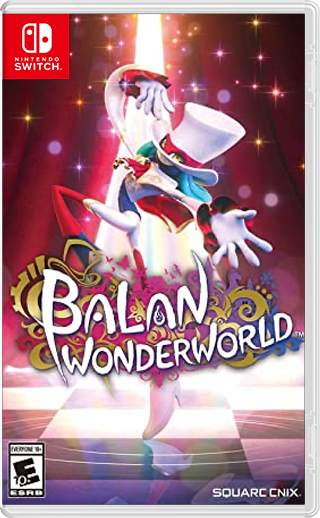The theater can be a magical place, bringing wondrous characters and emotions to life for an audience that ranges from first time attendees to ever-present devotees. That’s partly why I was excited when Balan Wonderworld made its stage debut, with a theme and culture ripe for replication in video game form. All the better, it was coming courtesy of Yuji Naka and Naoto Ohshima. These two have played a recurring part in Sega’s history, including the original genesis of Sonic the Hedgehog. With Square Enix as a publisher, I figured the concept was in good hands.
Unfortunately, whatever potential the character and their playhouse held at that first reveal has been lost in the final production. Its opening cutscene is a bombastic showcase of its lead performer, but once you’re in control all that bravado disappears. Whatever ideas fueled this Wonderworld, they exist outside of what the player actually experiences. Balan Wonderworld may have ways to entertain you at times, but this flop is too unenjoyable to sit through.
Flipping through the programme
Stylistically the clearest parallel for Balan Wonderworld is the Sega Saturn classic Nights into Dreams. Both were headed in some way by Naka and Ohshima, feature a fantastical atmosphere and “host” character, and deal with the struggles of otherwise ordinary people. Unfortunately, between 1996 and now one of the most important facets was lost – enjoyable gameplay. Outside of its design, I struggle to find anything praiseworthy about Wonderworld. It is an unfortunate example of inspiration exceeding innovation, and is borderline unplayable on Switch.
Before those grievances, though, let me pull back the curtain on what works here. Balan as a character is fantastically realized in terms of aesthetic. While the maestro doesn’t have much of a role to speak of in this production, their showmanship shines in every cutscene they appear in. There’s a sense of wanting to play as Balan that runs throughout, and had the game featured more of them outside of minimal quick time events then perhaps there’d be unique possibilities within.
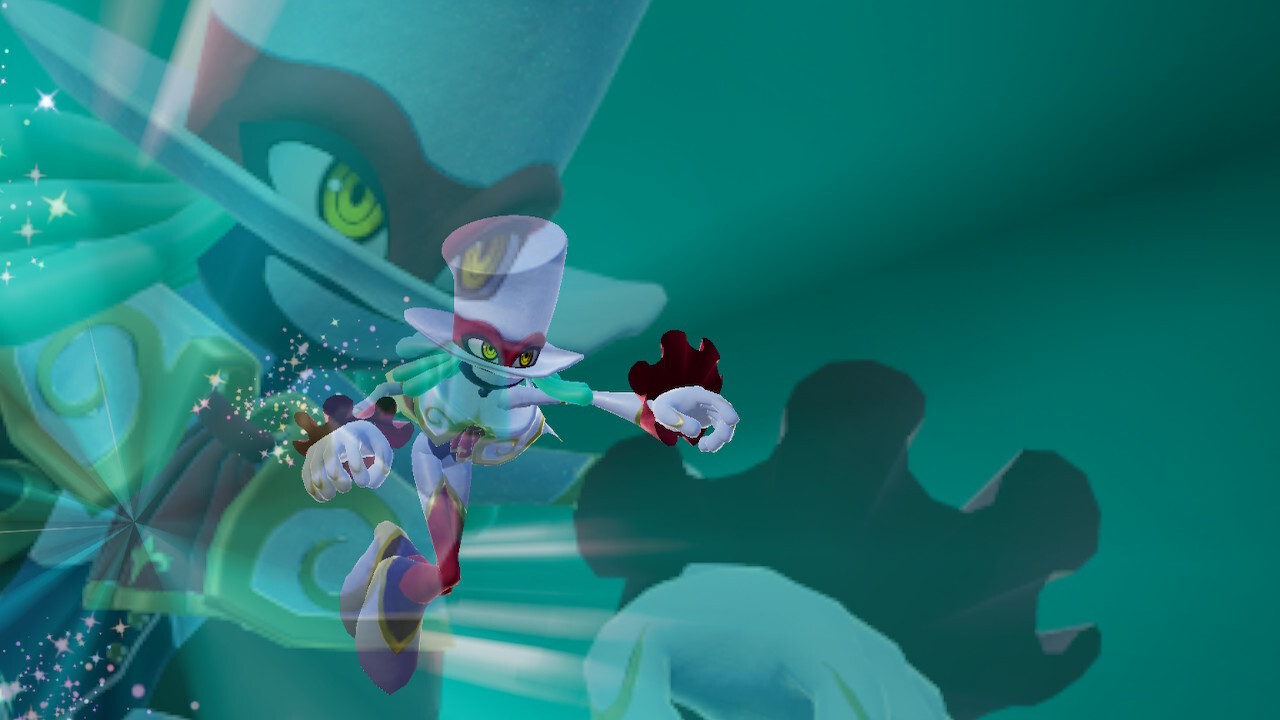
While the interchangeable playable characters aren’t exactly scene-stealers, the various stage specific characters you encounter do have their charm. Though their stories are only told in brief (but pretty) cutscenes, they’re enough to showcase their dilemmas and eventually resolutions. For a moment’s time I actually cared about an ocean diver going through a break-up (complete with torn photo) with her dolphin friend, or a little girl suffering survivor guilt over a cat.
You do see these characters throughout their associated areas but they’re just…there. No interaction, no involvement. Instead you roam through two 3D platforming environments each before having their introductory cutscene play. Then comes a boss fight, a dance party (yes, really, for every. single. one.), and one last cutscene of their happy ending. Maybe they could’ve been interwoven better, or perhaps Balan Wonderworld shouldn’t have been a video game in the first place to tell these mini-stories, but it all feels so hands off and removed from what you’re actually doing in-game.
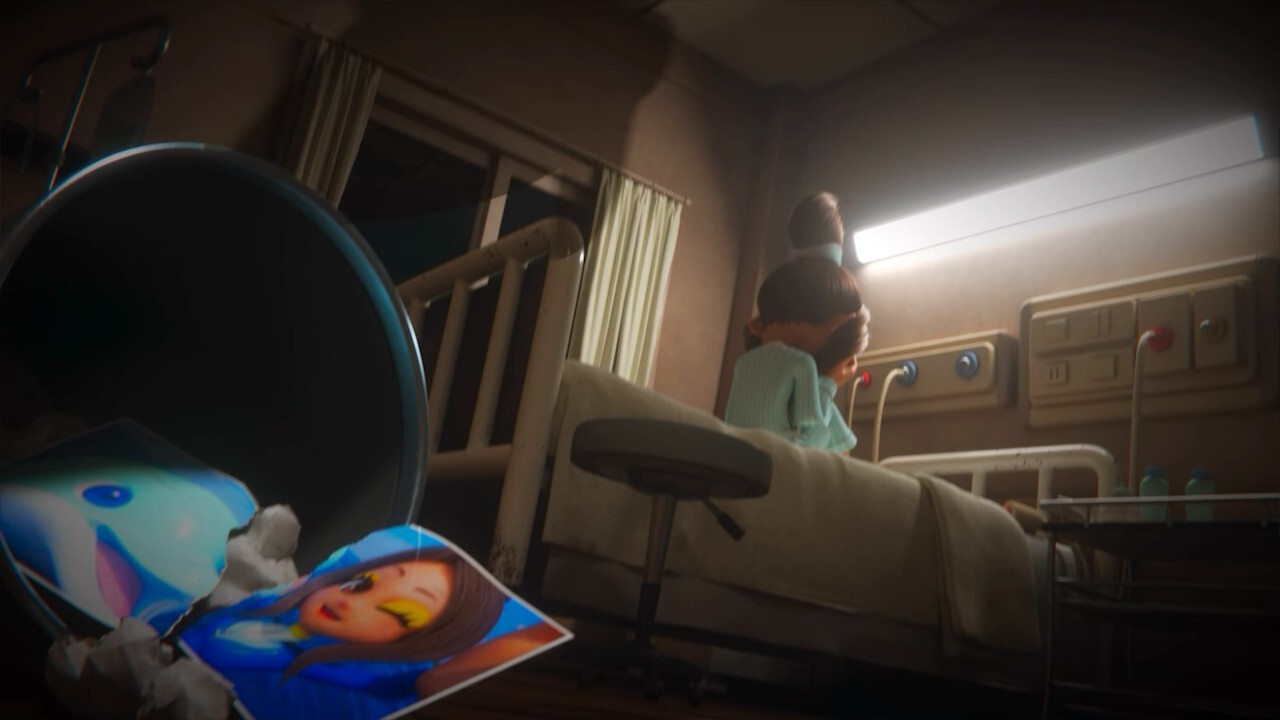
That’s not to say that Nights was a masterclass in storytelling, but it was held up by a clear sense that some thought went into its psychoanalytical themes and ideas. Balan by comparison feels surface level. Even the “theater” ideas aren’t all too present, and as somewhat imaginative as certain setpieces can be (the game has a flying whale island, this is a good thing) it just doesn’t have the gameplay to prop up all its set dressing.
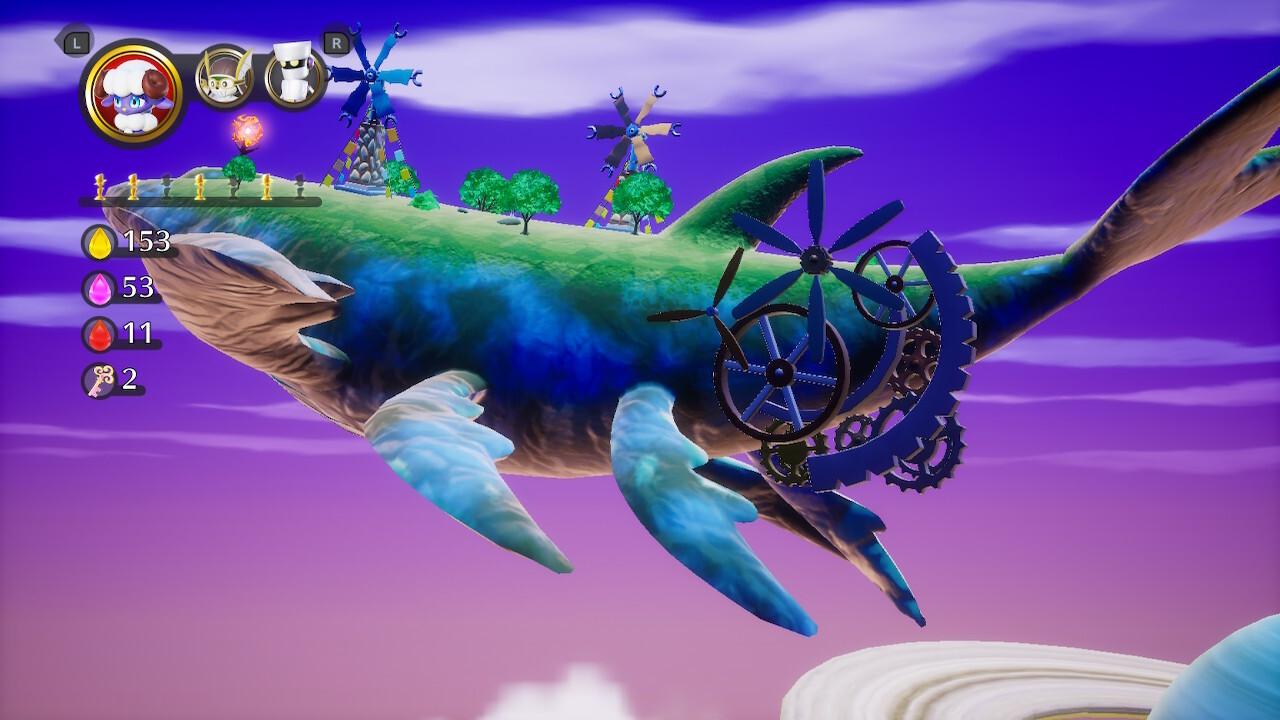
Wardrobe malfunction
Seemingly in an attempt to recapture the simplicity of Sonic the Hedgehog, Balan Wonderworld only requires one button to play. This on its own isn’t a problem, but it extends into every single facet of the experience. Did you just enter a menu? Can’t tap a “cancel” button to back out, you need to move the cursor to an option to return to your previous menu. Want to pick up a cute little bird-blob to toss at a larger bird-blob so it’ll produce an egg? You’re going to be jumping a few times before it catches on to the context.
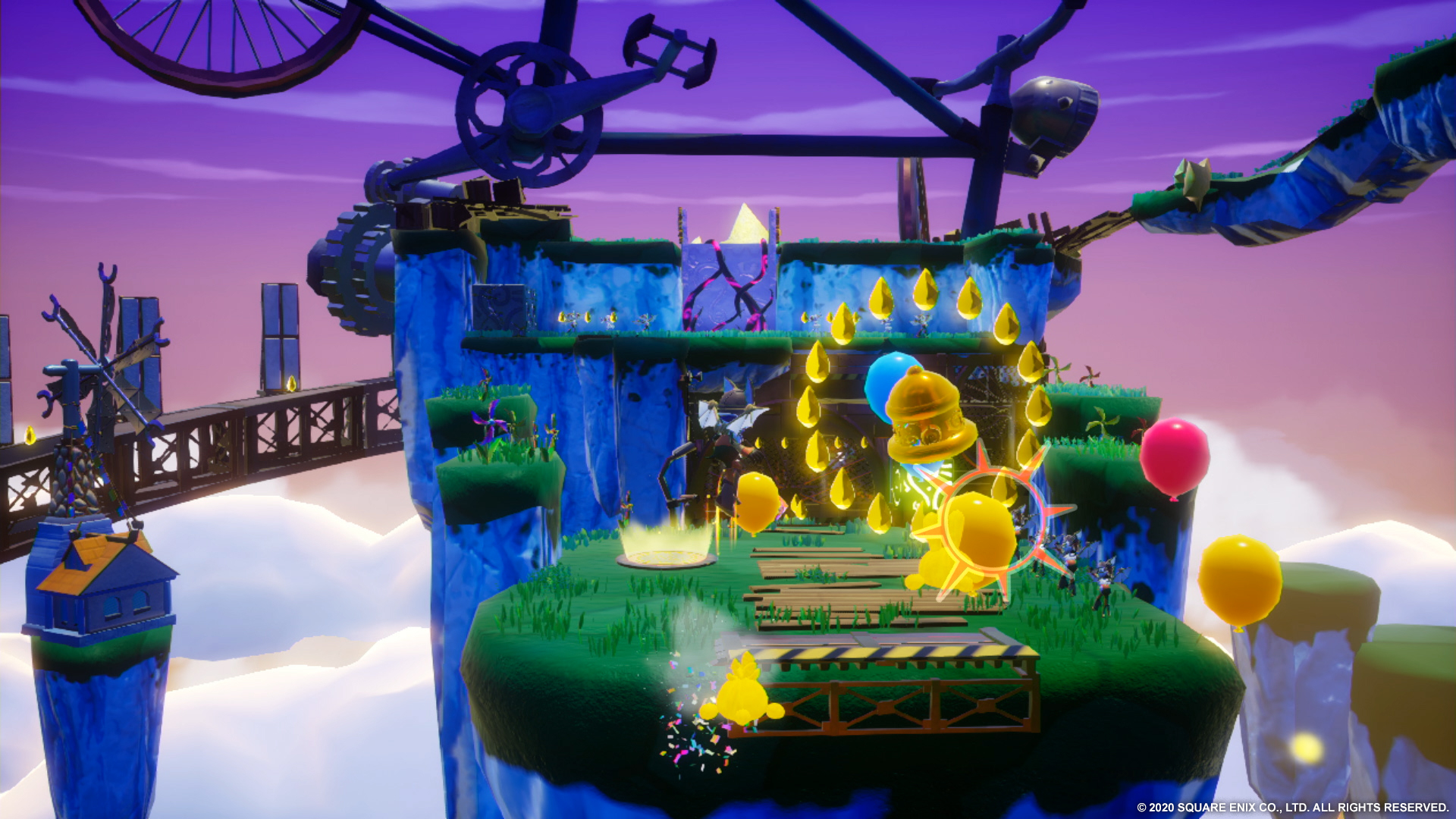
Those examples are just inconveniences, albethey ones that come up semi-regularly. Where this choice becomes an active and unavoidable hindrance to Balan is via its core gameplay mechanic – costumes. There are dozens of costumes, based on citizens(?, the game never makes this clear either) of Wonderworld each with their own ability. These generally vary from exploratory, to mechanic-based, to combat oriented in nature, and each world has a handful of outfits unique to them.
A large part of the game is having the right costume for the right situation, with you able to carry three at a time. On occasion though, since there is but a single action button, having a certain costume will take away your ability to jump. In a 3D, exploration based platformer. You can put some trust in the stage to be designed in a way to accommodate this, but more often than not you’ll be swapping again and again, always with the same delayed transition sequence.
In these stages your main goal is to collect Balan statues, which allow you to progress to more stages. While a few are simple enough to pick up on a runthrough, the game goads you to return to stages with certain costumes in order to venture further off the main paths and pick up more. There is a storage system in place for costumes, but there are two main problems here. The first is that getting hit while wearing a costume will delete it from your stock, meaning you need to have multiples queued up or be prepared to leave and come back once you’ve done so. The other is that the game just isn’t fun or fully functional, and doesn’t warrant this sort of replayability.
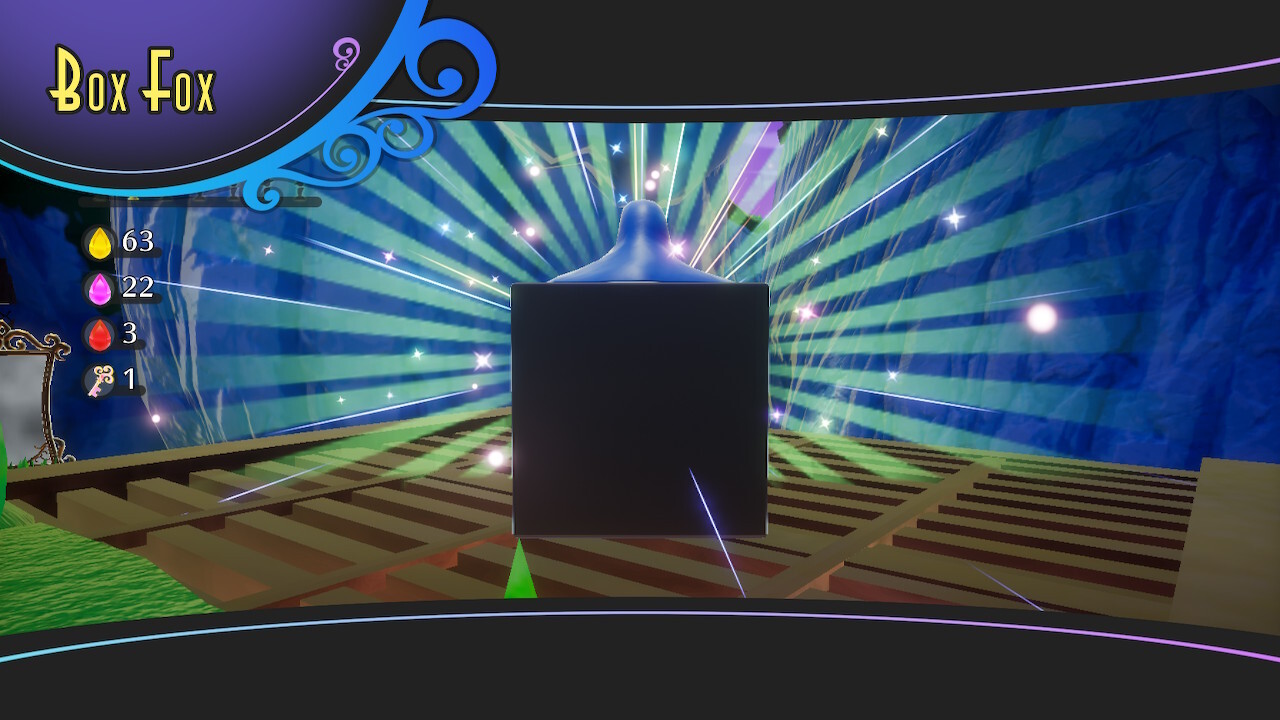
Then there are the enemy encounters. While midbosses are simple and unobtrusive, typical enemies are annoying to fight off. First, you may have to shuffle through costumes. Second, “combat” isn’t the game’s forte in the first place, making its floaty jumps a poor match for stomping on enemies (the most catch-all method of staving off). Finally, enemies respawn after a while, which starts the cycle all over again if you’ve wandered a bit to grab a collectible or had to backtrack, bringing their annoying battle music with them to drown out what’s usually a fitting track for the level.
I wanted to like Balan Wonderworld, and even if you did somehow find its gameplay satisfying there’s no accounting for how it runs. Slow down is frequent, visual elements and effects can feel off, the overall pace is slow and laborious, and from start to finish nothing feels rewarding. Outside of cutscenes it isn’t visually impressive on Switch when docked. In handheld, all of these problems are redoubled to the point you’ll slip out during intermission and never look back.
Show’s over…
There’s one last piece to Balan Wonderworld’s puzzling assembly of ideas. The aforementioned bird-blobs, known as Tims, follow you as you stutter through stages. While I do find them cute, their presence just doesn’t feel integrated to the rest of the game. The central hub, the Isle of Tims which they call home, has a mechanical structure that Tims… power? And by feeding them collectible crystals found in stages they’ll grow, change color, and fuel it more earnestly. This grants you more Tims, more goals, and elicits the bare minimum of interest.
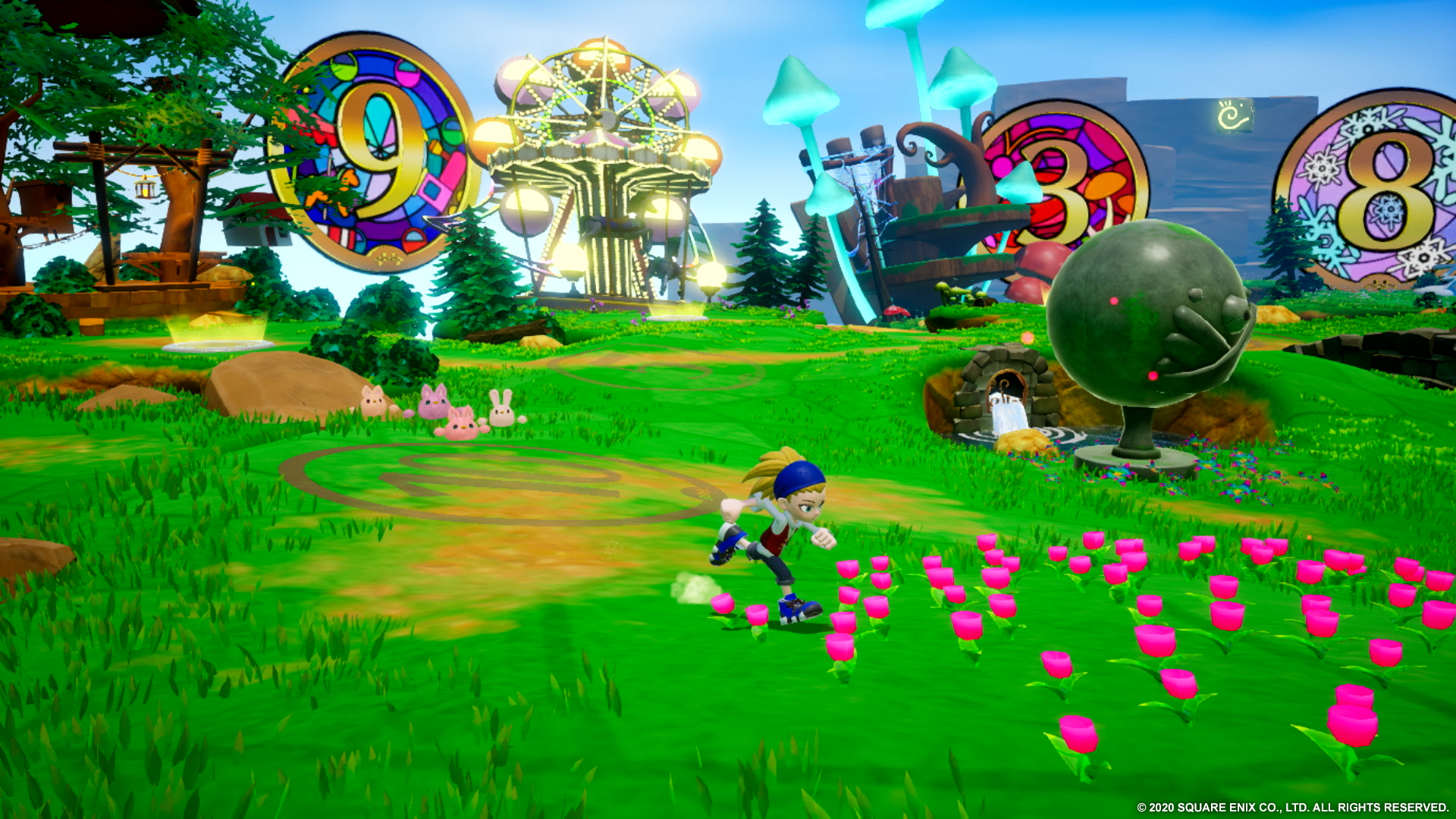
As stand ins for Nightopians, or even Chao, they’re simplistic and unsatisfying. Sometimes you’ll find a shiny Tim egg that produces one with rabbit ears, or different patterns for their down. Still cute, but without enough control over how they grow to feel investible. In the end I just continued to feed them without distinction, watching a number roll over higher until something unexplained happened and the process began again.
Balan Wonderworld feels like a game based on a licensed property that doesn’t exist. The thought that’s gone into its character designs and cutscenes cannot be denied, and it’s only in those glimpses that there’s any spark of magic. Its stage themes are fitting and enjoyable, but find themselves regularly drowned out with the interruptive battle music. Its Tims may be cute, but they never feel consequential or investible. Its wardrobe and collection of settings are sizable, but their construction is flimsy and never draw you in.
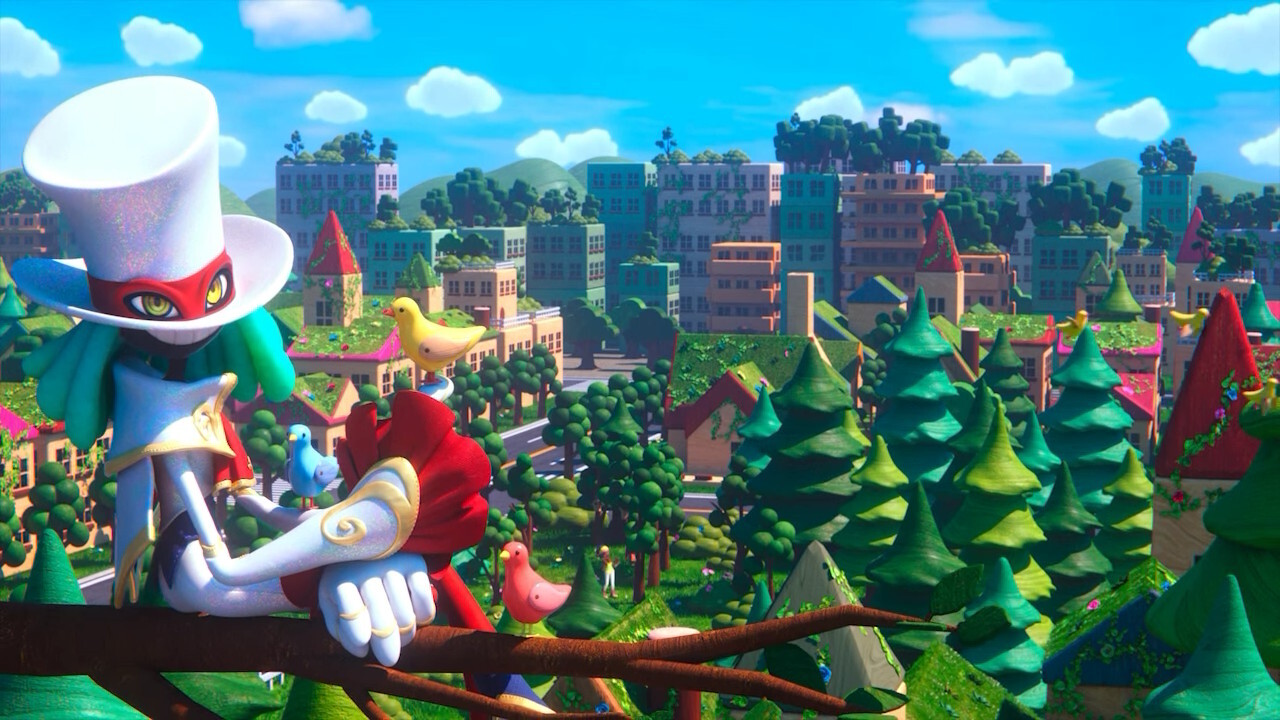
The worst offender, though, is its host. Balan’s power and personality are both glimpsed but not experienced, leaving not curiosity but contempt for the laborious action you do play through. As he soars ala Peter Pan with the flair of Willy Wonka, the game continues to stumble below. Cautiously optimistic Switch owners should consider a different platform, as thanks to the problematic handheld performance there’s really nothing here that makes the system an appealing option for an already unappealing game.

System: Nintendo Switch
Release Date: March 26, 2021
Categories: Platformer
Publisher: Square Enix
Developer: Square Enix
